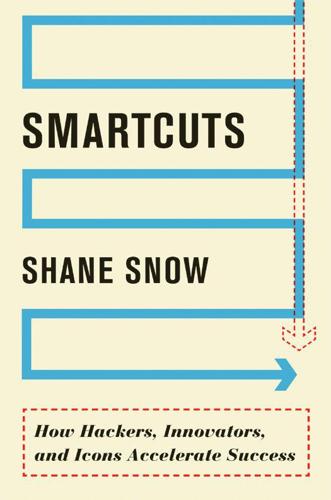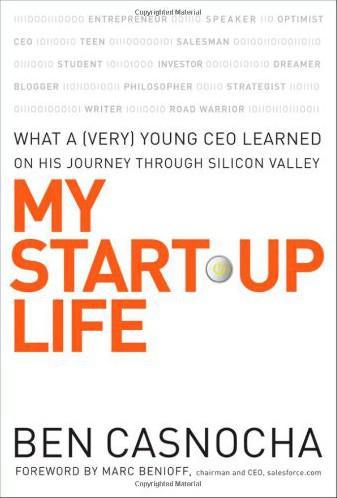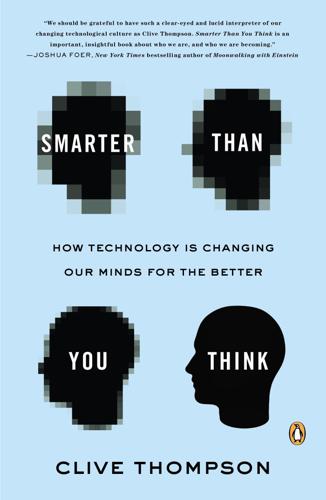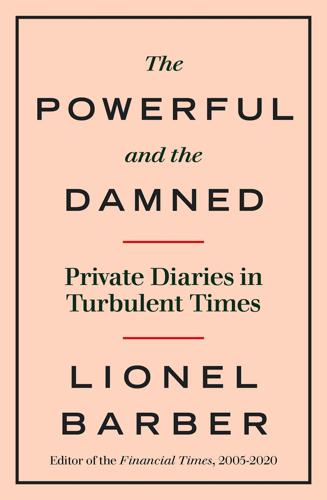
Smartcuts: How Hackers, Innovators, and Icons Accelerate Success
by
Shane Snow
Published 8 Sep 2014
But data is clear that big cities are better places for creative people to create and inventors to invent. * Superconnectors are a subset of the “Connectors” Malcolm Gladwell writes about in The Tipping Point, people whose many acquaintances span social circles and who can facilitate in the spreading of ideas and epidemics. While Connectors are often passive links between groups, superconnectors actively use their networks to help individuals reach many people at once. For a bonus discussion on Gladwell and superconnectors, check out shanesnow.com/superconnectors. * Though we have to give Abrams credit for being a memorable storyteller, too
…
And although Fidel has turned out to be a less-giving ruler than a younger version of himself might have hoped, the octogenarian Castro’s approval rating in Cuba remains higher than the percentage of Americans who approve of their own Congress.* Che, true to his giving self, eventually headed off to Congo and Bolivia to teach them and join their freedom fights. In the end, Castro’s revolutionary message reached a massive audience through a superconnector—a radio—but the rebels won the people’s hearts because they showed that they sincerely cared. The movement harnessed the power of the superconnector by giving service as a publisher and educator. J. J. Abrams built his career by collaborating with talented, fast-rising, and well-connected people and by making them look great. And Mint grew business via its own broadcast on the Web, tapping superconnected people and then helping the members of those people’s networks through meaningful content.
…
See lateral thinking Sobiech, Zach, 71–75, 218n73 Socarrás, Carlos Prío, 126 social bookmarking, 135–36 social media/networks about “going viral,” 54 creating apps nobody wants, 58 creating new connections, 101, 103, 155 identifying new patterns and trends, 107–8, 121–22 Oreo cookies tweet, 147–50 recognizing good stuff, 54–55, 119–20 See also media Socrates (Greek philosopher), 38 Space Exploration Technologies Corporation (SpaceX), 169–78, 183–86, 234n169 Spade, David, 34, 35 Spanish-American War, 124 Spielberg, Steven, 132 Staats, Bradley, 59, 62–65 Star Trek (film series), 132, 174 Startup Compass, 61, 212n39, 215n59 Startup Genome Report, 24, 216n59 startups blaming external factors, 60 breakthrough innovation by, 165 business plan, 135–36 “fail fast and fail often” mantra, 13 impact of sudden wealth, 143–47, 229n145 learning from failure, 57–61 nature of change over time, 10 Star Wars VII (film), 131 Stengel, Jim, 180 stress, 44, 162 A Study in Scarlet (Doyle), 163 Suarez, Fernando F., 117 success changing direction by cheetah behavior, 23–24 collaboration can lead to, 94, 118, 133–34, 138 combining work and lateral thinking, 13–14 differences in meaning, 8 first-mover advantage, 112–17 leadership quality as indicator, 28 mentoring as secret to, 37–40 money changes one’s view, 143–47, 229n145 overcoming impediments, 163–67 sideways thinking can lead to, 20–23 success breeds, 60–61 takes hard work, 11, 19, 20, 30, 50, 55, 97, 99, 121–22 takes more than luck, 14, 44, 46, 64–65, 106, 108, 199 vision and hard work leads to, 33–37 See also failure; hacking the ladder; ladder to success The Success Principles (Canfield), 38 sudden wealth, impact on success, 143–47, 229n145 Super Bowl XLVII, 147–50 superconnectors defined, 127n, 134 momentum from, 141–43 exemplifying the process, 197 superconnectors, examples Aaron Patzer, 135–36 BuzzFeed (blog), 142, 154 Ernesto “Che” Guevara, 126–31, 136–38 Fidel Castro, 123–31 Jack Canfield, 134 Jimmy Kimmel, 141, 229n141 J. J. Abrams, 131–33 Sonny Moore, 134 Super Mario Bros. (video game), 1–4, 14, 203nn1–2, 205n14 survival instincts/mechanisms, 7, 60–65 Taft, William Howard, 24–26 Taking Care of Business (film), 132 Tate, Ryan, 111 Taylor, Zachary, 24–25 teamwork, 41–43, 45 technology exponential nature of change, 4 first-mover advantage, 112–17 Moore’s law, 171 TechStars (startup mentors), 9 The Telegraph (newspaper), 144 Teller, Astro, 177–79, 185 Tellis, Gerard, 115 10X thinking about the meaning, 177–78 applied to education, 192–94, 198 can it really be “rocket science?

Bold: How to Go Big, Create Wealth and Impact the World
by
Peter H. Diamandis
and
Steven Kotler
Published 3 Feb 2015
Having a professional around is going to save you from chasing pie in the sky and help you focus on real ways to move the needle. Super-Connector (optional). Super-connectors are influential individuals who have access to a vast network of important people, money, and ideas. They usually have large followings themselves and thus know a lot about idea distribution and success. They can help brainstorm marketing strategies for the campaign, internally motivate and inspire the team, implement some of the more ambitious goals, lead behind-closed-door fund-raising efforts, and really build momentum during the campaign. If you know a super-connector or can figure out how to inspire one to help (typically by aligning your campaign goals with theirs), then you will have a huge advantage over campaigns that don’t have this access. 6.
…
Louis, The (Lindbergh), 244 Sprint, 45–46 Sprint Spark, 45 StackOverflow.com, 218 Stanford University, 117, 135, 222, 262 TSensors Summit at, 44 Stardust mission, 97 Stein, Lee, 253 Stewart, Jon, 95, 99 stone soup, 104–7 Strasbourg, France, 104, 107 Strategic Coach, 278 stretch goals, 187, 191 Student, 124, 125 Students for the Exploration and Development of Space (SEDS), 100, 101, 115, 291n subgoals, 103–4, 112 subtractive manufacturing, 29 Summit, Scott, 34 Sun Microsystems, 240 supercomputers, x, 7, 56–57, 66 super-connectors, in crowdfunding campaigns, 194 super-credibility, line of, 96, 98–99, 98, 100, 101–2, 107 crowdfunding launches and, 190, 199, 203, 204 incentive competition launches and, 266, 272 Supermechanical, 177 surveys, 161, 209 synthetic biology, x, 22, 24, 41, 63–65, 66, 216 Systrom, Kevin, 15 Taylor, Alice, 37–39 technology, exponential, x–xi, xiii, xiv, 15–17, 21–22, 23–39, 41–67, 73, 79, 115, 116, 137, 146, 243, 274, 275, 277, 278 artificial intelligence as, 22, 24, 41, 52–59, 63, 66, 138–39, 146, 160, 162, 167, 216, 275, 276 deception phase in, 8, 8, 9, 10, 24, 25–26, 29, 30, 41, 60 digital camera as, 4–5, 6–7, 9, 10, 14, 76 disruptiveness of, see disruption, exponential Gartner Hype Cycle and, 25–26, 25, 26, 29 growth curve of, x, 6, 7, 9, 12, 12 indicators of entrepreneurial readiness in, 24, 26–29, 26, 31, 32–33, 57, 59, 60–61, 62, 64–65 infinite computing as, 21, 24, 41, 48–52, 66 intersection of multiple fields in, 61, 63, 65–66 Moore’s Law and, 6–7, 9, 12, 31, 64 networks and sensors as, x, 14, 21, 24, 41–48, 42, 45, 46, 66, 275 in putting linear companies out of business, 9–10, 15, 16, 17 robotics as, 22, 24, 35, 41, 59–62, 63, 66, 139 Six Ds of, 7–15, 8, 20–21, 25, 29; see also Six Ds of Exponentials synthetic biology as, 22, 24, 41, 63–65, 66, 216 3–D printing as, 22, 24, 28, 29–39, 41, 48, 66, 146, 216, 276 traditional industrial processes disrupted by, 17, 18–22 user-friendly interfaces and, 26–29, 30, 32–33, 59, 60–61, 65 technology manager, in crowdfunding campaigns, 193 TED conferences, xi, 54, 134 Teller, Astro, 80–84, 89, 93, 138 Teller, Edward, 80 Tesla, Nikola, 178, 196 Tesla Motors, 24, 111, 117, 119, 120, 122, 123, 127, 223 Tesla Museum campaign, 174, 178–79, 187, 192, 196 Tesla Science Center, 178, 192 testing-based insights, 160, 161 Thiel, Peter, 167 Threadless.com, 143–44, 161, 223 3–D printing, 22, 24, 28, 29–39, 41, 48, 61, 66, 146, 148, 199, 216, 276 birth of, 30 deceptive phase of, 30, 31 disruptive impact of, 33–35, 37, 38, 39 exponential entrepreneurship in, 35–39 toy industry impacted by, 38–39 user-friendly interfaces for, 32–33 3–D Systems, 30, 31–33, 34, 39 Thrun, Sebastian, 137 Time, 117, 139, 157 Tongal, 151–54, 156, 158, 166, 195 TopCoder, 152, 159, 160, 218, 226–28, 236, 240, 241, 254 Toronto, University of, 74 touch screens, 42 toy industry, 38–39 Toyota Camry, 32 traffic data, 43, 47 transportation industry, 20–21, 42–43, 62, 245 3–D printing’s impact on, 33, 34 trend surfing, 208 True Ventures, 62 T-shirt design competitions, 143–44, 161, 207, 223 Tsiolkovsky, Konstantin E., 97 Turnstyle Solutions, 47 Tversky, Amos, 121 Twine, 177 Twitter, 11, 157, 173, 196, 202, 236 2001: A Space Odyssey, 52, 100 Uber, 20–21, 66, 174 Ubuntu, 186, 210 Unilever, 152 United Nations Committee on the Peaceful Uses of Outer Space, 100 Unix, 27 upselling, in crowdfunding campaigns, 207, 208–9 USA Today, 154 user interfaces, 26–29, 30, 59 for 3–D printing, 32–33 in robotics, 60–61 in synthetic biology, 65 US Postal Service, 54 Utah Technology Council Hall of Fame, 133 uTest, 161 Vaz, Andrew, 160 Venter, J.

My Start-Up Life: What A
by
Ben Casnocha
and
Marc Benioff
Published 7 May 2007
If you want to take your network to the next level, you need to truly enjoy relationshipbuilding. It can’t just be for the ends. You must love the means. • The “what you know” is important. The cliché “It’s not what you know, it’s who you know” is true, to an extent. But as Auren Hoffman, CEO of Rapleaf, told me once, the what you know is important, too. Super-connectors become perceived “experts” in something. For example, I know some things about business and some things about education and young people. I’m an expert in neither, but to my business friends I’m their expert on youth issues and to my school friends I’m their expert on business. Knowing a little about a lot of topics can produce a powerful expert effect that makes you indispensable to your network.

Choose Yourself!
by
James Altucher
Published 14 Sep 2013
This means you have to get good at coming up with ideas. Finding a meaningful connection between you and the other person. A connection that person might value. Lewis Howes contacted many former athletes. Sometimes people use their hometowns or schools. Sometimes people use mutual friends, etc. * * * Eight Skills You Need to Become a Super-Connector 1. Introduce two other connectors. If you can introduce two people who are themselves great connectors, then you become a meta-connector. They will meet and get along, since connectors get along with one another for two reasons: they are naturally friendly people (hence their ability to connect so easily with people) and they have a lot of friends in common almost by definition.

The Dictionary People: The Unsung Heroes Who Created the Oxford English Dictionary
by
Sarah Ogilvie
Published 17 Oct 2023
When we applied network analysis to these people, we discovered there was no one in the network who was more powerful or influential in connecting other people to each other (technically called ‘betweenness centrality’) and being connected themselves to influential people (‘eigenvector centrality’) than Alexander John Ellis. He was a ‘super-connector’ among the Dictionary People. He brought other people to the project and those people were influential. Just as Murray would never have become Editor without Ellis, many people would not have become Dictionary volunteers without Ellis’s encouragement. Today social media is a meeting place and platform for gossip, news, and discussion.

Smarter Than You Think: How Technology Is Changing Our Minds for the Better
by
Clive Thompson
Published 11 Sep 2013
They brokered information that the rest of us were simply too lazy, busy, or constitutionally unsuited to leverage. We had limits on our sociality. Today’s ambient tools dissolve those limits. They make it far easier for us to keep tabs on weak ties and to make more of them. This phenomenon transforms everyday people into superconnectors, in everyday lightweight contact with far more people than before. The explosion of weak ties is how I and my wife found our house. It was how an acquaintance was able to notice—at the corner of her attention—what had happened to Mona Eltahawy and how Suarez’s colleagues are able to find answers so quickly at work.

The Powerful and the Damned: Private Diaries in Turbulent Times
by
Lionel Barber
Published 5 Nov 2020
Every chief executive since the British handover in 1997 has tried to please Beijing and ended up being deeply unpopular in Hong Kong. And matters are getting worse because economic growth has slowed, sky-high house prices are squeezing the middle class and a pro-democracy ‘umbrella movement’ is gathering force. Lam describes Hong Kong as a ‘super-connector’ between the Chinese mainland and the rest of the world. She talks enthusiastically about new infrastructure projects and claims she will deal with the housing problem. Lam is definitely on top of her brief but her robotic style suggests to me she has no political sixth sense. The chasm between the older and younger generation comes home to me when a young man called Joshua Wong, 20, drops by the FT office.

The Power Law: Venture Capital and the Making of the New Future
by
Sebastian Mallaby
Published 1 Feb 2022
Next, money flowed in, the tally of venture capitalists shot up, and startups multiplied both in numbers and in ambition: this was analogous to China around 2010. Finally, as competition among startups became hectic and costly, the Valley’s venture capitalists performed a coordinating function. They brokered takeovers, encouraged mergers, and steered entrepreneurs into areas that were not already swamped; as the super-connectors in the network, they shaped a decentralized production system. This was the final threshold that China had to cross. By 2015, it would have done so. China’s progress from phase two to phase three was crystallized in the story of Wang Xing, the founder of a stupendously successful Chinese food-delivery empire named Meituan.

Rainbow Six
by
Tom Clancy
Published 2 Jan 1998
They had the world's most powerful supercomputers to do the real work. These were located in the basement of the sprawling NSA headquarters building, a dungeon like area whose roof was held up with naked steel I-beams because it had been excavated for just this purpose. The star machine there was one made by a company gone bankrupt, the Super-Connector from Thinking Machines, Inc., of Cambridge, Massachusetts. The machine, custom-built for NSA, had sat largely unused for six years, because nobody had come up with a way to program it efficiently, but the advent of quantum theory had changed that, too, and the monster machine was now cranking merrily away while its operators wondered who they could find to make the next generation of this complex machine.